Results 4,431 to 4,440 of 12096
Thread: Anandtech News
-
10-28-14, 06:16 AM #4431
Anandtech: Alienware Launches The Alienware 13 Gaming Laptop With A Twist
Alienware teased the new, smaller version of their gaming laptop in August. Available today, the Alienware 13 is the 4.5 pound little brother to the Alienware 14, but this gaming laptop has a twist. Alienware is offering an add-on Alienware Graphics Accelerator, which lets you plug a desktop GPU into this portable machine to dramatically increase performance.
Let us take a quick look at the new Alienware 13 though. While not as small as an ultrabook, it is significantly thinner than the 14 inch model, coming in at just under 1 inch thick. This, coupled with the two pounds less weight than the larger model, should make it a lot more portable.
The CPU will be Intel i5 and i7 Haswell U series parts, and the GPU offerings will be up to the NVIDIA GTX 860M. This will power a display, which at the default configuration is a lowly 1366x768 IPS panel, but luckily the display can be upgraded significantly with 1920x1080, and 2560x1440 options, as well as optional touch.
The base $999 model also comes with a 5400 rpm 1 TB hard drive as the base option, however the laptop can be outfitted with SSDs as well. In late 2014, it seems hard to believe that a $999 computer can still come with a slow mechanical hard drive, so hopefully the upgrade to SSD storage does not break the bank.
The star or the show though is the Alienware Graphics Accelerator, which is a first for this segment. Ryan will be covering this in full, but this $300 add-on is certainly a unique offering from Dell. With a dedicated 460 watt power supply just for the GPU, the accelerator should help the Alienware 13 with thermals when gaming on the discrete GPU. However, you can fall back to the GPU built into the laptop when you are on the go. Hopefully this adapter gets added to the entire Dell laptop line.
Unfortunately, details are light on this launch, with Alienware not releasing any press releases at the time of this writing. Check in to www.alienware.com starting today to check out all of the available pricing and options for the Alienware 13.
Sources: Gizmodo Hexus
More...
-
10-28-14, 08:40 AM #4432
Anandtech: Alienware's Graphics Amplifier Announced - An External Video Card Chassis
The idea of an external PCI-Express chassis for video cards is practically as old as PCI-Express itself. However over the years the idea has failed to reach the consumer market as a complete product, even with the introduction of standardized external PCIe interfaces such as Thunderbolt. Various prototypes have been shown, but in practice the only way to acquire such a rig has been to build it yourself, combining an ExpressCard slot and its pokey PCIe 2.0 x1 link with an external PCIe chassis.
Thankfully it looks like the PC industry is finally going to turn the corner on the concept thanks to Alienware. Today Alienware is introducing their own PCIe video card chassis, the Alienware Graphics Amplifier.
Alienware’s amplifier is a fairly typical take on the concept – there are only so many ways to build an external PCIe chassis – however Alienware has been able to put together something that is clearly tuned for video cards. The chassis itself houses a PSU and a single x16 PCIe slot for a video card, along with a quartet of USB 3.0 ports for any other I/O needs. Notably, Alienware has designed the amplifier to be able to handle double-wide video cards up to 375W, which is quite a bit more power than professional grade external PCIe chassis, and this means it can conceivably run just about any self-contained video card on the market. That said, like many small form factor computers the amplifier is also clearly designed for video cards with fully exhausting blowers, so it’s going to be best paired with reference model video cards since blowers are nearly non-existent in custom cards these days.
More interesting perhaps is the PCIe interface, which up until now has always been the sticking point in getting a video card chassis to market. The good news is that Alienware has more or less solved the problem, but the bad news is that the interface is a proprietary Alienware/Dell design that is only available on their laptops. Alienware notes that the interface is actually a PCIe + USB interface – apparently carrying USB over from the host rather than using PCIe to power a separate controller – and in the meantime we’re still working to determine just how many PCIe lanes the interface is carrying. Even if it’s not a full 8 lanes (the Haswell U series CPUs don’t support 16 lanes), given the severe bandwidth limitations of ExpressCard and Thunderbolt, even a 4 lane setup would represent a significant improvement in bandwidth. Like Thunderbolt however this interface does appear to use active cabling (it would be very difficult to carry that much bandwidth externally without it), in which case the cable is going to be an expensive part of the entire setup.
On the host side, the amplifier is being launched alongside the Alienware 13, which will be the first of what will presumably be a series of Alienware laptops to support the amplifier’s interface. Rather than hanging off of spare PCIe lanes, we suspect some kind of MUX is in play here, as Alienware has noted that the 13’s internal dGPU (a GeForce 860M) has to be shut off to use the amplifier interface. Most likely Alienware is rerouting the GPU’s lanes to the interface when it’s in use. Activating or deactivating the interface does require a reboot, which although not especially convenient bypasses some very messy issues that could occur when hot-plugging an active GPU, and we suspect would otherwise be a show-stopper.
Meanwhile it’s interesting to note that in their development process Alienware has been able to solve some of the technical issues around an external video card in the process to better integrate it with the host. The video card in an amplifier can be used to drive both external and internal displays, meaning that it’s possible to use the amplifier to drive the 13’s built-in display and still reap the benefits, even without an external monitor. The overall non-portability of the 7lb+ amplifier and the USB ports strongly drives the amplifier towards being used as a docking station with an external monitor, but if you want to use it to drive the internal display that is going to be a viable option.
Moving on, Alienware is taking a vendor agnostic approach with the amplifier and will be supporting NVIDIA as well as AMD GPUs. There are still some additional technical details we’re chasing down on how this will work with the internal display capabilities, but ultimately it means the amplifier can be used with a wide range of cards from both vendors. That said, since the amplifier is going to be best paired with a blower type video card, NVIDIA’s cards are going to be the more natural fit at this time. Alienware has been showing the amplifier off with the GTX 980, and next to being the most powerful single-GPU video card on the market it also has a reference blower that is an excellent match for the amplifier’s cooling capabilities.
Finally and perhaps most importantly, Alienware has made it clear that the amplifier isn’t a prototype and won’t be vaporware, and that we’re looking at an external video card chassis that is actually going to ship. Alienware will begin taking orders for the amplifier today alongside the Alienware 13 laptop, with the hardware shipping in November. Even the price is decent (especially compared to DIY attempts), with the amplifier set to cost $299. This is on top of the price of the Alienware 13 laptop and the video card to fill the amplifier with, so the total cost of a setup is still going to be significant, but despite being the first shipping consumer solution it’s not priced through the roof.
More...
-
10-28-14, 10:30 AM #4433
Anandtech: Razer Announces The Leviathan Sound Bar
 Razer has traditionally been a gaming peripheral company, which started with the Boomslang mouse in 1998. Over the years, they have expanded their portfolio to cover more of a gamer’s needs, adding keyboards, keypads, mouse mats, and headphones as well as complete systems. Today, Razer has expanded their product family again with the launch of the Razer Leviathan sound bar.
Razer has traditionally been a gaming peripheral company, which started with the Boomslang mouse in 1998. Over the years, they have expanded their portfolio to cover more of a gamer’s needs, adding keyboards, keypads, mouse mats, and headphones as well as complete systems. Today, Razer has expanded their product family again with the launch of the Razer Leviathan sound bar.
The Leviathan is able to produce 5.1 virtual surround sound using Dolby Virtual Speakers and accepts Dolby Digital and Pro Logic II multichannel audio. The bar itself contains four tuned drivers, with two 2.5” full range and two 0.74” tweeters, which are powered by a 30 watt RMS amplifier. Frequency response is quoted as 180 Hz to 20 KHz on the sound bar itself. Complementing the bar and filling in the remainder of the audio range is a 5.25” 30 watt RMS subwoofer with a downward firing driver, which has a quoted response of 20 Hz to 180 Hz.
The sound bar supports analog, optical, or Bluetooth inputs, with the Leviathan supporting any Bluetooth 4.0 device streaming over A2DP, and Razer has also made sure to include aptX audio codec support for higher quality A2DP streaming. To make the connection to the sound bar as easy as possible the Leviathan also includes NFC to configure the Bluetooth pairing. The bar also supports several tilt angles (0°, 15°, and 18°) to ensure it works well in a variety of situations.
If the idea of virtual surround sound through the use of a sound bar seems like something you might be interested in, the Razer Leviathan will be available for pre-order on razerzone.com with worldwide availability starting in November. Prices are USA: $199/EUR: €199.
Source: Razer
More...
-
10-28-14, 06:01 PM #4434
Anandtech: Motorola and Verizon Announce the Droid Turbo
Verizon and Motorola have always had a close relationship. The smartphones in Motorola's Droid line are typically exclusive to the carrier, and they helped make Verizon a heavy supporter of Android devices during a time where AT&T was the exclusive US carrier for the iPhone. Today's announcement is no exception. The Droid Turbo is a Verizon exclusive smartphone made by Motorola, and seemingly their most powerful. Its biggest selling point is its battery life, but before getting into specifics I've given an overview by laying out all the specifications in the chart below.
Motorola Droid Turbo SoC APQ8084 2.7GHz Snapdragon 805 with 4 x Krait 450 + Adreno 420 RAM/NAND 3 GB LPDDR3, 32/64GB NAND Display 5.2” 2560x1440 AMOLED at 565ppi Network 2G / 3G / 4G LTE Listed as Category 4 Dimensions 143.5 x 73.3 x 11.2 mm, 176 grams (Black Nylon)
143.5 x 73.3 x 10.6mm, 169g (Metallic Red/Black)Camera 21MP (5248x3936) Rear Camera with F/2.0 aperture, 2MP Front Camera Battery 3900 mAh OS Android 4.4.4 KitKat Connectivity 802.11a/b/g/n/ac + BT 4.0, USB2.0, GPS/GNSS, DLNA, NFC SIM Size NanoSIM It's interesting that this is a Verizon exclusive device, as it has significantly better specifications than the Moto X which is Motorola's current widely available flagship. Like many of the other recently released flagship phones, the Droid Turbo uses Qualcomm's Snapdragon 805 with four Krait 450 cores at 2.7GHz and 3GB of LPDDR3 memory. The front of the device sports a 2560x1440 AMOLED display, which is also quickly becoming the norm for Android flagship smartphones. Above it is a 2MP front-facing camera capable of recording 1080p video, and below it lies three capacitive navigation buttons which is a departure from the on-screen buttons that Motorola has been using on their other devices for some time now.The back of the device is home to the 21MP rear-facing camera which Motorola states is capable of recording 4K video at 24fps, with 1080p recording still topping out at 30fps. The design of the back is somewhat similar to the Moto X and Moto G, but it appears to be far less curvy. There's a great deal of branding, with a logo for Verizon, the Droid brand, and Motorola's. Even without those, it's would still be clear to anyone familiar with Motorola's style of hardware design that this is a Motorola device. The curved back, centered camera, and crosshatch pattern on the back are all reminiscent of past and current Motorola phones. However, there is no lip at the top for the 3.5mm headphone jack like on Motorola's other current devices.The big point of differentiation is the battery capacity. Motorola has not stated the voltage of the battery, but states that it has a 3900mAh capacity and claims it will last up to 48 hours of usage. While there is always some degree of variance from a manufacturer's claims based on how a user uses their device, if the Droid Turbo approaches anywhere close to that claim in battery testing it will be very far ahead of competing smartphones with regards to battery life. One possible issue I noticed with Motorola's listed specifications is in the network section which classifies the device as supporting category 4 LTE. This may be referring to Verizon's network certification, but the Droid Turbo should be rated for category 6 LTE.The Droid Turbo will come with two choices of materials. There is a metallic finish which comes in black or red, and is the lighter and thinner of the two variants. These will all have a 32GB capacity. The 64GB version will only be available in the Nylon Ballistic Black finish which is slightly thicker and heavier. It will be launching this Thursday for $199 and $249 for the 32GB and 64GB variants respectively on a two year term.
More...
-
10-28-14, 09:32 PM #4435
Anandtech: Logitech K480 Multi-Device Bluetooth Keyboard Capsule Review
We have been doing round-ups of various input devices fit for HTPC purposes. Some of the vendors have started shipping with Bluetooth instead of using a proprietary communication mechanism over 2.4 GHz RF. The advantage of Bluetooth is its versatility and presence in almost all modern mobile devices (smartphones and tablets). These don't support a full-size USB host port for plugging in the USB RF receiver dongles. Utilizing Bluetooth enables these input devices to communicate with the rising crop of mobile devices as well as interface with traditional PCs. Communication with PCs can be enabled by using either an inbuilt card - common in most notebooks which integrate Bluetooth and Wi-Fi capabilities in a single mPCIe card - or, an explicit Bluetooth dongle.
Logitech recently introduced an innovative Bluetooth keyboard, the K480. While traditional Bluetooth keyboards have aimed to differentiate with aesthetics, in-built rechargeable batteries and support for multiple devices at the $100+ price points, Logitech's K480 aims to bring in a set of 'sweet-spot' features for $50.
Gallery: Logitech K480 Multi-Device Bluetooth Keyboard
The salient features of the K480 include:
- Support for up to three different Bluetooth devices, with easy switching between device profiles with a rotary dial on the top left corner
- Recess to allow placement of smartphones / tablets in a position suitable for viewing while typing on the keyboard
- Keyboard support for both Mac and Windows / Android ecosystems
- Explicit power on/off switch for conserving battery life
After extensive use, we found that the keyboard fulfills most of its promises. It is cross-platform and does support pairing to multiple devices. The sequence of steps to get the device paired is outlined pictorially in the top half - This ensures that even the tablet-only non-tech savvy consumers can get up and running quickly with the unit. There is no need for a dongle, and as long as the target device has Bluetooth capabilities, the keyboard is good to go. Range is not an issue due to the use-case (mobile devices in close proximity). The unit feels quite solid, and is heavy (in order to ensure stability when heavy tablets are placed in the recess). The function keys are multiplexed with some multimedia / mobile specific buttons (such as single keypress to home). In addition, on Android devices, an app can be installed to provide additional keyboard layouts.
In terms of key feel and the typing experience, it has to be said that the keyboard is suitable for usage in bursts (again, the typical smartphone / tablet usage), and not prolonged typing. The shape of the keys, as well as the keypress feedback, seem to have been decided more with the looks and aesthetics in mind, rather than the typing experience. Fortunately, there is nothing to complain about the keyboard layout itself (from the viewpoint of Windows and Android systems, at least). Other than that, it would have been nice to have an adjustable tilt option for ergonomic considerations.
In terms of future improvements at this price point, it would be nice to have a trackball (in case of an unchanged form factor) or a trackpad. This would enable standalone usage with a PC (similar to the Adesso Bluetooth Keyboard WKB-4000BB). The Bluetooth keyboard market for mobile devices is heavily commoditized. So, it is refreshing to see Logitech integrating some nifty and interesting features in the K480 to make it stand out in the crowd.HTPC & Mobile Keyboards Bench Aspect Logitech K480 Logitech K480Adesso WKB-4000UBLogitech K400IOGEAR GKM561RSIIG JK-WR0412-S1SIIG JK-WR0312-S1Adesso WKB-3000UAdesso WKB-4400UBAdesso WKB-4000BBAdesso WKB-1200 Device Type Keyboard Only Keyboard Only Dimensions 11.77" x 7.68" x 0.79" 11.77" x 7.68" x 0.79" Weight 1.81 lbs / 820 g 1.81 lbs / 820 g Power Source 2x AAA 2x AAA Communication Bluetooth Bluetooth Power Saver Explicit On/Off Switch Explicit On/Off Switch Keys Count 79 (with multiplexed multimedia and mobile-specific keys) 79 (with multiplexed multimedia and mobile-specific keys) Touchpad Dimensions (Diagonal) N/A N/A USB Receiver Storage Compartment N/A N/A Backlight No No Keyboard Layout 8/10 8/10 Ergonomics 8/10 8/10 Build Quality 9/10 9/10 MSRP (USD) $49.99 $49.99 Warranty 1 year 1 year
More...
-
10-29-14, 04:00 PM #4436
Anandtech: Skyera Releases skyHawk FS All-Flash Array: Up to 136TB of NAND in 1U
Our enterprise storage coverage has mainly been focused on individual enterprise SSDs from the likes of Intel and Micron, but there's a lot of interesting action in the storage array space. I met with most of the big names in the array business at Flash Memory Summit this year, so with a better understanding of the market and with the right contacts, I think it's logical that we expand our enterprise storage content to cover arrays as well.
Since we haven't covered storage arrays or the companies involved in the past, I'll start with a brief introduction of Skyera. While Skyera is a relatively new company, the company is filled with experience and knowledge of storage and non-volatile memory industries. The founders of Skyera, Radoslav Danilak and Rod Mullendore, both worked at SandForce before founding Skyera in 2010. Mr. Danilak was actually the co-founder and CTO of SandForce, whereas Mr. Mullendore served as the Chief Hardware Architect.
While Mr. Danilak and Mr. Mullendore bring a lot of system-level hardware design knowledge to the company, what really separates Skyera from the rest is the NAND expertise. This is especially thanks to the CEO, Frankie Roohparvar, who was one of the founders of Micron Quantum Technologies in the early 90s. Micron Quantum Technologies was a manufacturer of NOR flash that was then acquired by Micron and basically formed the foundation of Micron's NAND business. Before joining Skyera in 2012, Mr. Roohparvar served at Micron for 13 years with his most recent position being the Vice President and General Manager of the OEM Division of Micron's NAND Solutions Group.
Skyera's approach to flash array design is to start from the lowest level, i.e. the NAND silicon. Obviously the company doesn't manufacture its own NAND but Micron, Toshiba, and SK Hynix are all investors in the company, which ensures a steady supply of NAND and also gives Skyera much deeper access to NAND than what typical customers get. What this means is that Skyera can run its own validation and 'trimming' (optimizing the read/write parameters etc.) process on the NAND to boost the endurance. The benefit is lower cost because Skyera's own process can increase the endurance of normal MLC NAND from ~3,000 P/E cycles to over 30,000 P/E cycles (or so I was told), whereas most companies are limited to buying off-the-shelf NAND, which either means cheap but low endurance cMLC or expensive eMLC.
With the brief introduction of Skyera out of the way, let's focus on the skyHawk FS. It's offered in raw capacities of 16, 32, 68 and 136TB with all models utilizing the same 1U form factor. The final usable capacity depends on the provisioning of the array as well as the compressibility of the data since the skyHawk FS does compression and de-duplication in hardware. For comparison, Pure Storage, which is one of the leading all-flash array suppliers, only offers up to 11TB in 2U form factor, so Skyera has an enormous advantage in terms of density.
The density advantage comes from Skyera's NAND expertise because the company builds its own drives (or blades as they are usually called) and can utilize the latest NAND lithographies available. While Skyera didn't specify the exact NAND that is used in the skyHawk FS due to the fact that there are multiple suppliers, I was told that the die capacity is 128Gbit and Micron's 16nm is one of the processes that is used. For the record, Crucial's MX100 and Micron's M600 are the only other products that I know of that use 16nm NAND right now and I know for sure that 16nm isn't available to the public in volume yet, so Skyera has an enormous advantage thanks to the close relations with the NAND manufacturers.
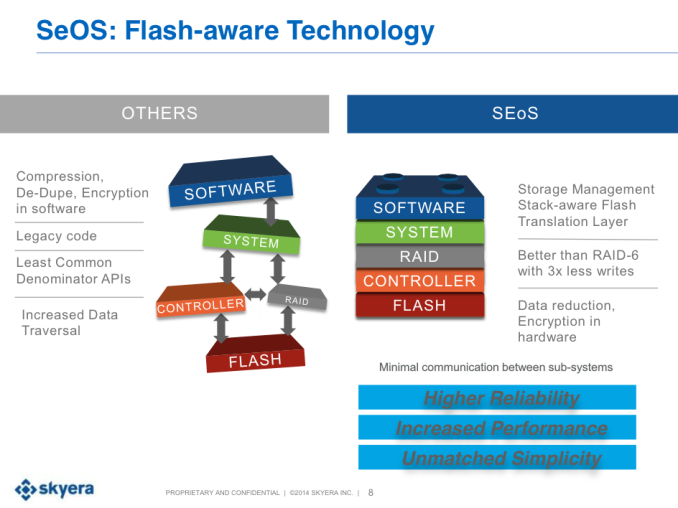
Software wise the skyHawk FS uses Skyera's own SEoS that has been designed solely for NAND. The vertically integrated business model allows Skyera to build the whole software stack around NAND, which enables a more global and adaptive Flash Translation Layer (FTL) for instance (i.e. the FTL can be managed at the system level instead of drive level). The design also allows the load to be split between the master controllers and the individual controllers in the blades for higher and more efficient performance, whereas with third party drives the drives would be doing their own management and the global/host management would be left for the master controller, resulting in a less efficient design.
In terms of performance, Skyera is rating the skyHawk FS at 2.4GB/s throughput and 400K IOPS with microsecond latencies, but unfortunately the IO sizes and queue depth are unspecified, so it's hard to draw any conclusions or comparisons from the numbers. The skyHawk FS has three 10Gbit Ethernet ports for connectivity and both iSCSI and NFS v3 protocols are supported. The skyHawk FS carries a 5-year warranty with no write endurance limitation, which is yet another advantage of Skyera's NAND knowhow.
The skyHawk FS is available immediately and is priced at $2.99 per raw gigabyte (i.e. with compression and de-duplication the real cost per gigabyte will come down).
Since this was our first flash array news post, I'd like to hear your feedback in the comments below. Would you like to see more content like this from us in the future? And if so, are there any specific topics or companies that you would like us to cover? The enterprise storage space is rather complex and there are a lot of companies involved, but we want to do our best to cover it (even in a limited matter) in the future, so let us know your thoughts.
More...
-
10-30-14, 12:03 AM #4437
Anandtech: Microsoft Launches Microsoft Health And The Microsoft Band
Today Microsoft launched a new platform called Microsoft Health, and to accompany this they are officially launching the long rumored health and fitness band, called, well, Microsoft Band. And to satisfy the new cross platform initiatives by the company, Microsoft Health is compatible with several fitness tracking services such as UP by Jawbone, MapMyFitness, MyFitnessPal, and Runkeeper. The Microsoft Band will be compatible with iOS, Android, and Windows Phone, which should satisfy most smartphone owners, and there is a Heath app available for each platform as well.
Microsoft Health is described as a cloud based service which can unite data from different health and fitness devices and services into a single secure location. This will allow a more holistic picture of your health and fitness activities to be monitored. Microsoft Health will track things such as steps, calories, heart rate, and other data, where it can then be analyzed by the Microsoft Intelligence Engine which will let the user know things such as which exercise they performed that burned the most calories during a workout, and how much restful versus restless sleep they are getting. Over time, and if you allow it access to more data, it will be able to extrapolate if eating breakfast helps you run faster, or if the number of meetings during a day impacts how you sleep, as examples. You can also opt in to connect Microsoft Health data with the already existing HealthVault to share your data with a medical provider. It is early days yet, but as a platform this seems to be where the health and fitness industry is heading. If you can get over the big brother aspects of having all of your movements and activities tracked, there may be some real insights gained in how your work, fitness, and leisure activities affect your health and wellbeing.
Microsoft is planning a steady release of information regarding Microsoft Health over the next while, including additional device and service partnerships and SDK availability.
It has long been rumored that Microsoft would re-enter the smart watch game, but over time the rumors morphed into a fitness band. The Microsoft Band is a smart band designed to be worn continuously, 24 hours a day. It includes 10 smart sensors for heart rate monitoring, calorie burn measurement, sleep quality tracking, and more. It will also include guided workouts which are curated by well-known fitness experts. In addition, it will provide some of the smart watch capabilities such as notifications as well as access to Cortana if you are connected to Windows Phone 8.1. The Microsoft Band is available starting October 30th for $199 from the Microsoft Store.
The wearables market is certainly in its infancy, so it is exciting to see the different array of devices appearing. Whether the market will tolerate them has yet to be decided, but companies such as Fitbit have proven that there is certainly a market for the health and fitness band. Microsoft has a relatively affordable offering here which is both cross platform, and a capable smart device. Microsoft Health as a platform is the bigger play here. Allowing access from many vendors is a great way to get initial buy-in from users, and once the fitness data is up in the Microsoft Cloud, I am sure Microsoft is hoping to capture some of these users for their other cloud offerings.Microsoft Health Microsoft Band Band Material Thermal plastic elastomer with adjustable fit clasp Display 11mm x 33mm 1.4" TFT Capacitive full color display, 320 x 106 resolution Battery Life 48 hours of normal use; advanced functionality like GPS use will impact battery performance Average Charge Time Full chage in less than 1.5 hours Battery Type Dual 100mAh rechargeable lithium-ion polymer batteries Operating temperature ranges -10°C to 40°C (14°F to 104°F) Maximum operating altitude approximately 12,000m Sensors Optical heart rate sensor
3-axis accelerometer/gyro
Gyrometer
GPS
Ambient light sensor
Skin temperature sensor
UV sensor
Capacitive sensor
Galvanic skin response
MicrophoneAdditional technology Haptic vibration motor Connectivity Bluetooth 4.0 LE Operating System Support Windows Phone 8.1
iOS 7.1 and later
Android 4.3-4.4 phones with BluetoothWater Resistance Dust and Splash resistant Warranty 1 year limited Price $199
More...
-
10-30-14, 07:12 AM #4438
Anandtech: Lenovo Completes Motorola Mobility Purchase
Back towards the start of this year, Lenovo announced that it would be acquiring Motorola Mobility from Google. Motorola Mobility, the phone and gadget arm of Motorola, would be sold to Lenovo for just under $3 billion. Motorola Mobility would come as the latest in a string of acquisitions for Lenovo, who in recent years has picked up IBM’s desktop and x86 server businesses, among other major purchases.
This morning Lenovo sends word that the deal has closed, and the acquisition of Motorola is complete. The final value of the deal has been placed at $2.91 billion, notably just a fraction of the price that Google purchased the complete Motorola for back in 2012.
With the closure of the deal and as part of the announcement, Lenovo has reiterated that they intend to keep the Motorola brand and their Chicago headquarters. The recent launch of the Moto X, Moto 360, and Motorola powered DROID Turbo have kept Motorola in the spotlight, and Lenovo seems eager to continue building off of that.
At the same time however the real challenge has just begun for Lenovo. Motorola Mobility has been a money-losing operation for Google, and while their launches have been high profile they’re still fighting for a spot of stability in a market where it’s Samsung who is the dominant (and most profitable) player. As we noted back when the acquisition was announced, Lenovo has earned a name in being able to turn around low margin device businesses. So if there is any chance of Motorola Mobility being back into the black, Lenovo stands a good chance of finding it.
More...
-
10-30-14, 07:12 AM #4439
Anandtech: Synology DS415+ Review: DSM on Intel Rangeley
Synology recently launched the DS415+, their first Intel Rangeley-based NAS. This 4-bay NAS, targeted towards SMBs and SOHOs, finally brings about hardware accelerated encryption capabilities to DSM in the desktop tower form factor. The Rangeley platform also provides a host of other advantages in a storage device. Read on for our review of the DS415+ to identify what Synology's DSM can do in conjunction with one of the latest Atom-based storage platform SoCs from Intel.
More...
-
10-30-14, 09:39 AM #4440
Anandtech: HP Inc Unveils The Sprout All-In-One To Blend The Physical And Digital Wor
The newly formed HP Inc took the wraps off a fairly unique PC. The Sprout is a traditional all-in-one computer that has been coupled with a 3D camera system, a 20-point touch mat, and a DLP projector to form a new PC system to “unleash your creativity like never before.” This unique combination allows a person to experience what HP is calling “Blended Reality.” The Sprout is the first product available in HP’s Blended Reality ecosystem, and is also backed up by a new 3D printer from HP Inc.
First off is the all-in-one PC, which features a 23” 1920x1080 display. Behind the screen is the Intel Core i7-4790S CPU, which is a four core, eight thread 65 watt Haswell part, and 8 GB of memory. Graphical duties are handled by the Intel HD 4600 integrated GPU as well as the NVIDIA GeForce GT 745A with 2 GB of DDR3, which is a fairly low end GPU. It almost makes no sense as to why the GPU is even in there, but it is for graphic-intensive tasks like gaming according to HP. It will be better than the integrated GPU but it would be nice to see a more powerful GPU or at least the 745M which has much more memory bandwidth to run games at the native resolution of the panel. Storage for the all-in-one is handled by a 1 TB hybrid drive, which only has 8 GB of flash acceleration. The Sprout features both 1000 Base-T Ethernet and 802.11n 2x2:2 dual band wifi. As just an all-in-one, there would be little to talk about here, but the Sprout is more than that.
The first part of the Sprout which differentiates it from a normal all-in-one is the camera system, which combines a scanner, a depth sensor, and a 14.6 MP camera, and utilizes Intel RealSense 3D Camera technology to allow the Sprout to capture 3D objects and allow the user to manipulate them after the fact. Once scanned, the Sprout can display the object on the computer display, or it can use the built in DLP projector to display the object on the 20” 20-point touch-enabled mat as seen in this video from HP:HP Blended Reality HP Sprout All-In-One CPU Intel Core i7-4790S (4 core, 8 thread, 3.2 GHz to 4.0 GHz, HD 4600 GPU, 65 W TDP) GPU NVIDIA GeForce GT 745A (GK107 MXM, 384 Stream Processors, 128 bit bus, 2 GB DDR3) RAM 8GB PC3-12800 DDR3-1600 SDRAM memory 2x4GB (expandable to 16GB) Storage 1TB SATA 6G Solid State Hybrid Drive with 8GB SSD cache Display 23" 1920x1080 w/10 point touch Network 10/100/1000 Base-T Network and Integrated Bluetooth® 4.0 and Wireless LAN 802.11a/b/g/n featuring Dual-band (2.4GHz and 5GHz) 2x2 MIMO technology HP Illuminator HP Illuminator, powered by the HP DLP Projector, the HP High-Resolution Camera with up to 14.6 megapixel resolution and the Intel® RealSense™ 3D Camera for instant capture of 2D and 3D objects, along with an LED desk lamp HP Touch Mat 20" diagonal, 20-point touch-enabled touch mat with an ultra-resistant top coating Web Camera HP High Definition 1MP Webcam Stylus Adonit Jot Pro stylus to write and draw. It can be attached magnetically to the upper-right side of the Sprout display. OS Windows 8.1 Sound DTS Sound
Also included is an Adonit Jot Pro stylus, which can be used to write or draw with on the mat. The stylus can be magnetically attached to the side of the Sprout display when not in use.
While not an ultra-powerful PC, you can certainly see some use cases for a device like this. Many creative professionals already use stylus and touch enabled pads, such as the ones from Wacom. The Sprout adds to this with the DLP projector so that you can directly manipulate the items on the pad, rather than use the pad in an abstract way. HP also adds to the experience with custom software to enable this hybrid approach for object manipulation in the digital space. HP is advocating the Sprout Marketplace, which will allow for easier discovery of applications which are optimized for the platform.
HP is committing to the Blended Reality ecosystem, with the Sprout as only the first device in the line. To further flesh out the ecosystem, they are also announcing the HP Multi Jet Fusion 3D printer. They are claiming that the output of the new printer has better overall strength, accuracy, resiliency, and finish than that of other 3D printers in the price range, as well as the HP version being up to ten times faster. As well, the Multi Jet Fusion printer will also allow for full-color 3D print solutions.
Is Blended Reality going to be a new buzz word? It is too early to tell, but certainly this is a fairly unique take on a creative focused personal computer. The combination of the DLP projector, touch pad, and all-in-one computer may be a compelling integrated solution for some. The Sprout is available for pre-order now starting at $1899, with availability scheduled for November 9th. The new 3D printer is not currently listed and no price was given, other than it would be more affordable that similar devices on the market today.
Source: HP Inc
More...
Thread Information
Users Browsing this Thread
There are currently 38 users browsing this thread. (0 members and 38 guests)





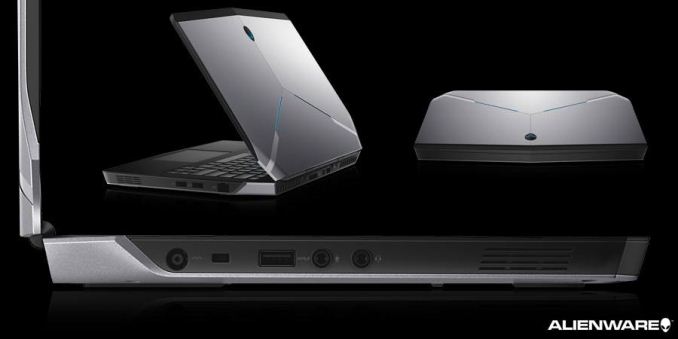


 Quote
Quote
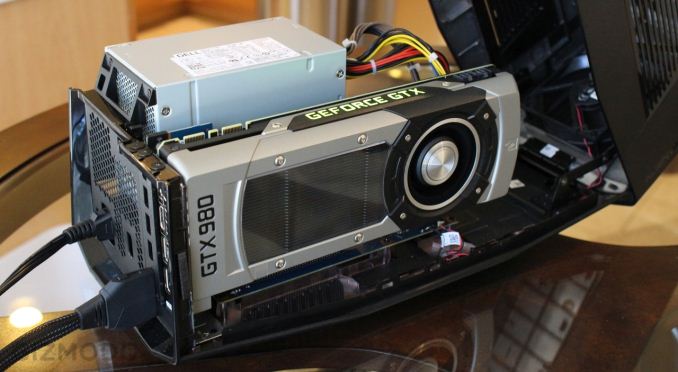
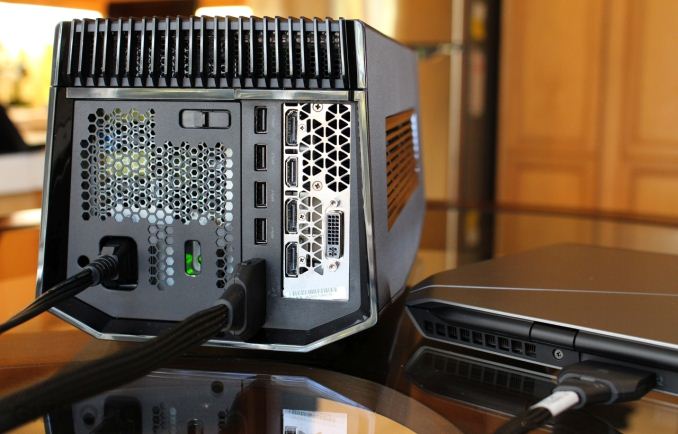


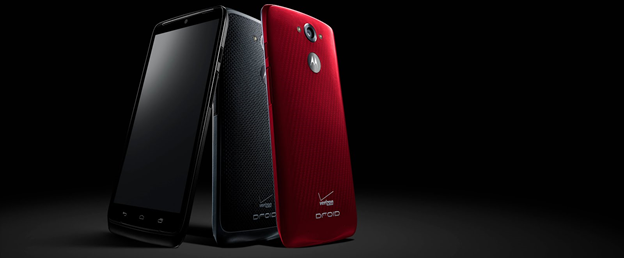
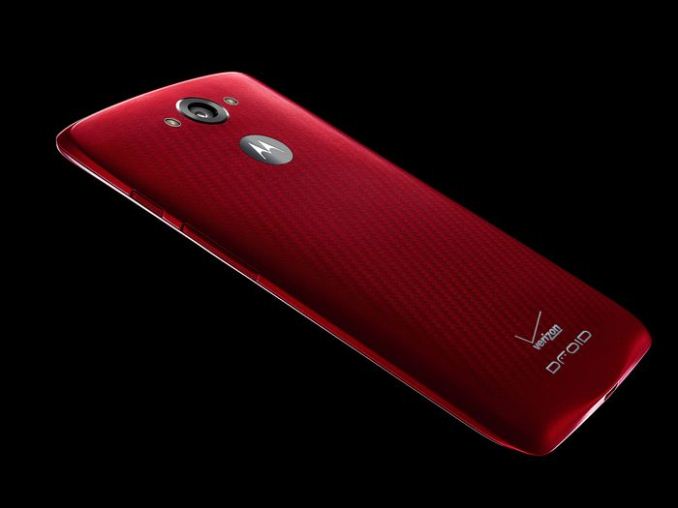








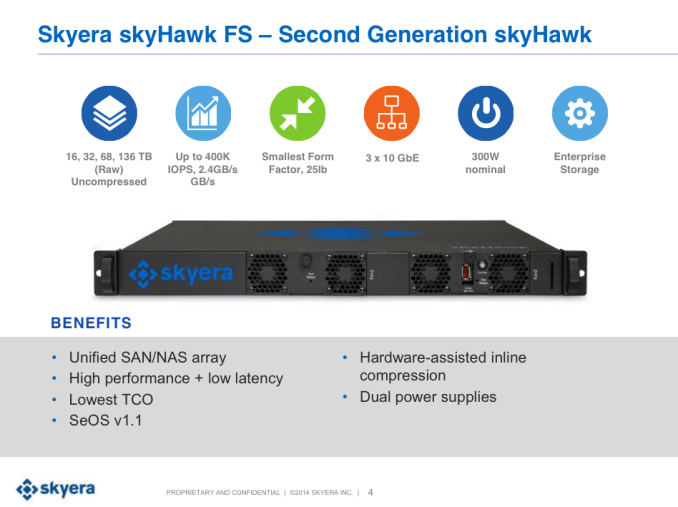


























Bookmarks